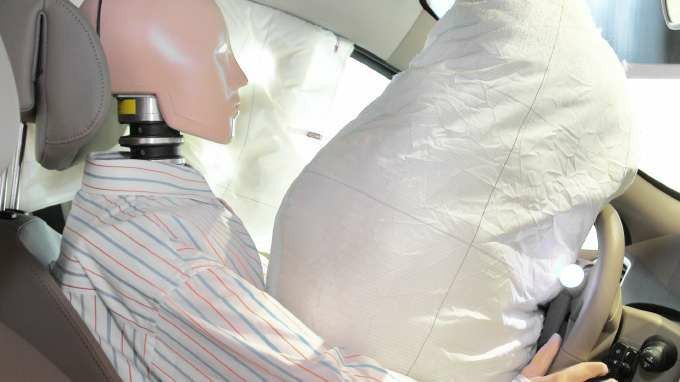When you buckle up and hit the road, you’re not just driving a car—you’re piloting a marvel of engineering designed to keep you safe. But have you ever wondered how car manufacturers ensure their vehicles are as safe as possible? Spoiler alert: it involves a lot of crashing, dummies, and cutting-edge tech. Let’s take a behind-the-scenes look at how carmakers test safety features, from crash tests to futuristic innovations that could save your life.
Crash Tests: The Ultimate Stress Test for Cars
Crash tests are the backbone of automotive safety testing. They’re like the car world’s version of a high-stakes action movie—except the goal is to avoid drama. Here’s how they work:
- The Crash Test Dummy
- Meet the unsung hero of car safety: the crash test dummy. These high-tech mannequins are packed with sensors to measure the impact of a crash on the human body. They come in all shapes and sizes, from toddlers to adults, to simulate real-world scenarios.
- Frontal Crash Tests
- In this test, the car is driven straight into a solid barrier at speeds of up to 35 mph. The goal? To see how well the car’s crumple zones, seatbelts, and airbags protect the dummy.
- Side-Impact Tests
- A moving barrier smashes into the side of the car to simulate a T-bone collision. This test checks the strength of the car’s side panels, side airbags, and seatbelt pretensioners.
- Rollover Tests
- Cars are put through extreme maneuvers to see how well they handle the risk of rolling over. Roof strength and stability control systems are put to the test.
- Offset Crash Tests
- In this test, only one side of the car’s front end hits the barrier. It’s designed to mimic real-world crashes where only part of the car takes the impact.
Beyond Crashes: Advanced Safety Testing
Crash tests are just the beginning. Car manufacturers use a variety of high-tech methods to ensure their vehicles are as safe as possible:
- Computer Simulations
- Before a car even hits the test track, engineers use advanced computer simulations to predict how it will perform in a crash. These virtual tests save time and money while allowing for endless tweaks and improvements.
- Pedestrian Safety Tests
- Cars aren’t just tested to protect their occupants—they’re also designed to minimize harm to pedestrians. Tests include simulating collisions with dummies to evaluate the impact on legs, heads, and other body parts.
- Whiplash Tests
- To protect against neck injuries in rear-end collisions, car seats and headrests are rigorously tested using dummies and specialized sleds.
- Child Safety Tests
- Cars are tested with child-sized dummies to ensure that car seats, seatbelts, and airbags are safe for younger passengers.
Innovations in Car Safety
Car manufacturers are constantly pushing the boundaries of safety tech. Here are some of the coolest innovations being tested today:
- Autonomous Emergency Braking (AEB)
- This system uses cameras, radar, and sensors to detect an impending collision and automatically apply the brakes if the driver doesn’t react in time.
- Adaptive Cruise Control
- This tech maintains a safe distance from the car in front, automatically adjusting speed to avoid collisions.
- Blind Spot Monitoring
- Sensors detect vehicles in your blind spots and alert you with lights or warnings to prevent lane-change accidents.
- Lane-Keeping Assist
- If your car starts to drift out of its lane, this system gently steers it back into place.
- Advanced Airbag Systems
- Modern airbags are smarter than ever, with sensors that adjust deployment based on the severity of the crash, the position of the occupants, and even their size.
- Vehicle-to-Everything (V2X) Communication
- This futuristic tech allows cars to “talk” to each other and to infrastructure like traffic lights, helping to prevent accidents before they happen.
The Role of Safety Ratings
Once a car has been thoroughly tested, it’s given a safety rating by organizations like the National Highway Traffic Safety Administration (NHTSA) and the Insurance Institute for Highway Safety (IIHS). These ratings are based on crash test performance and the presence of advanced safety features. A 5-star rating is the gold standard, and manufacturers proudly display these scores in their marketing.
The Future of Car Safety
The future of car safety is all about prevention. Here’s what’s on the horizon:
- Self-Driving Cars: Autonomous vehicles promise to eliminate human error, which is the cause of most accidents.
- Biometric Sensors: Cars could soon monitor drivers for signs of fatigue or distraction and take action to prevent accidents.
- Augmented Reality (AR) Windshields: Imagine a windshield that highlights potential hazards or displays navigation cues right in your line of sight.
Next time you’re driving, take a moment to appreciate the incredible engineering and testing that goes into keeping you safe. From crash test dummies to futuristic tech, car manufacturers are constantly working to make vehicles safer for everyone on the road. So buckle up, drive safely, and remember: your car is more than just a ride—it’s a lifesaver.
